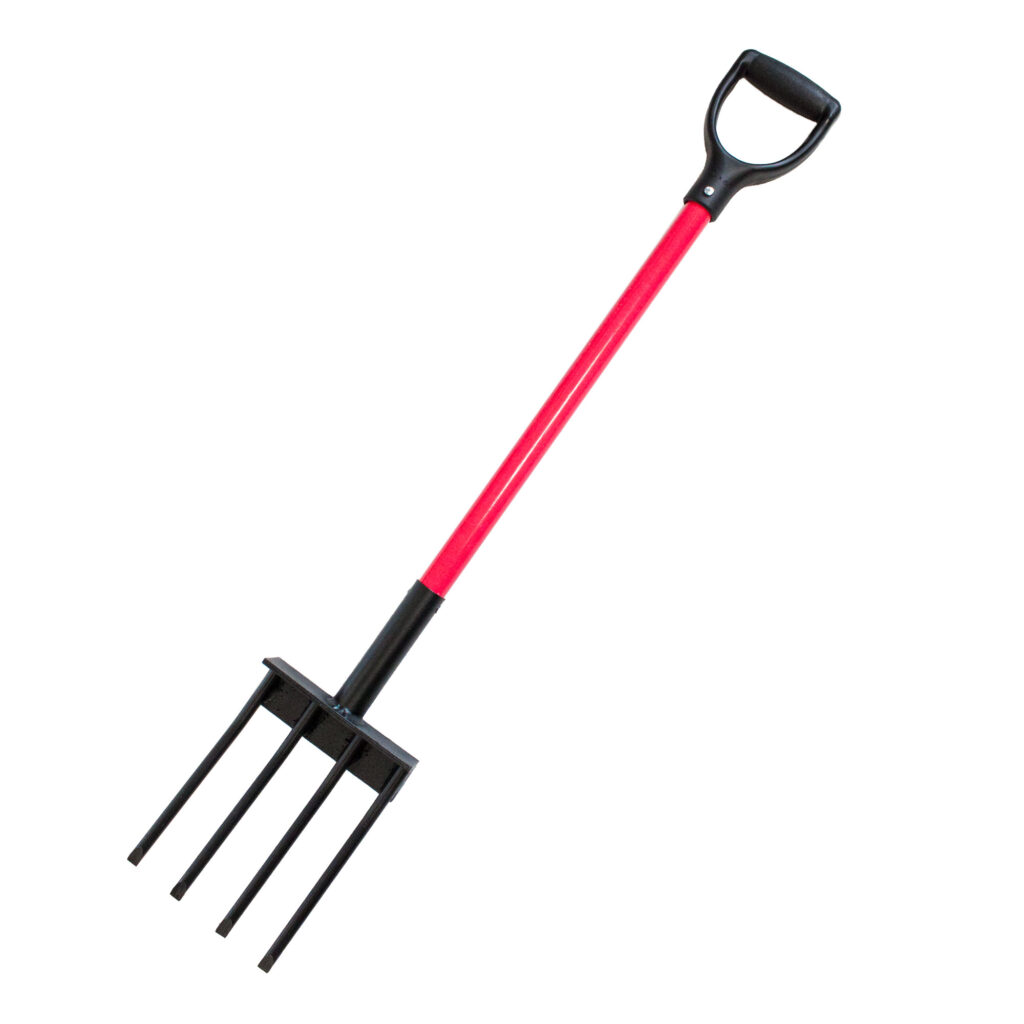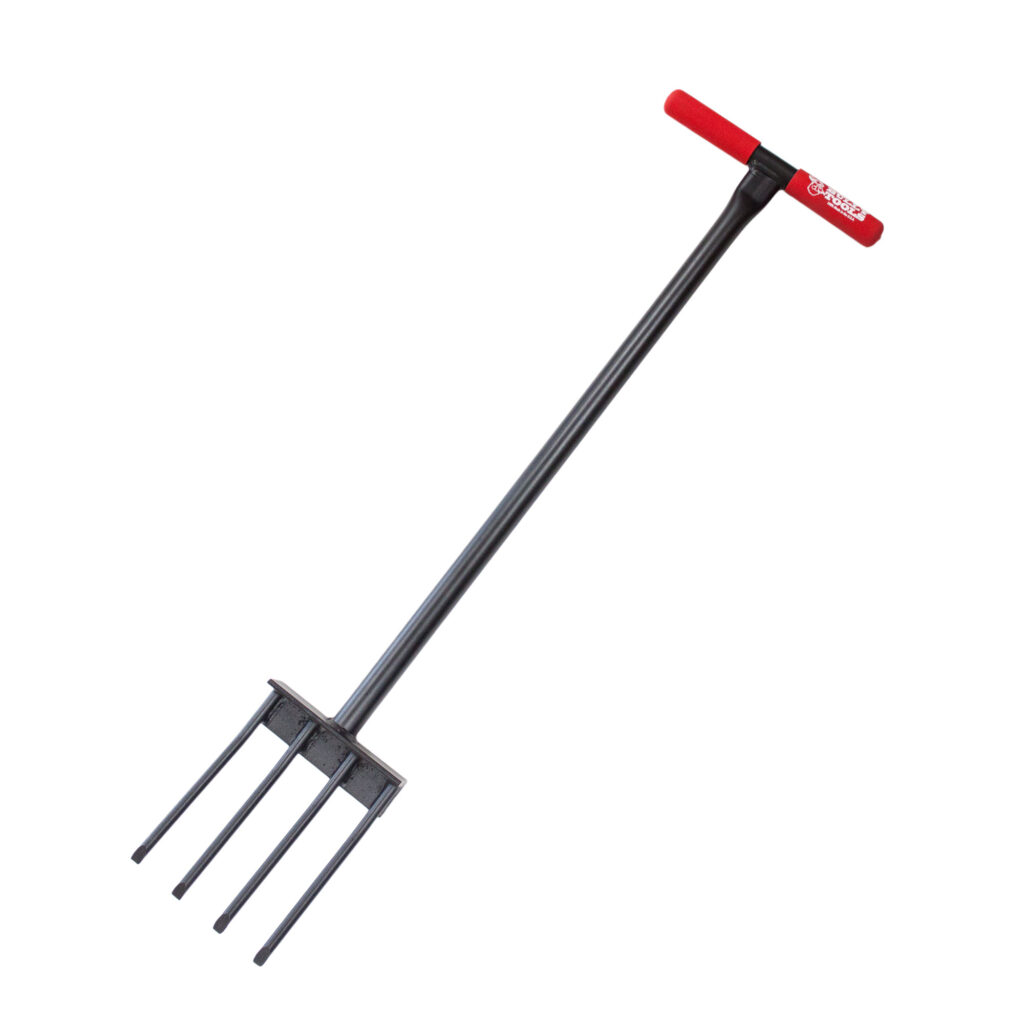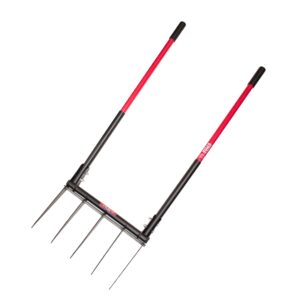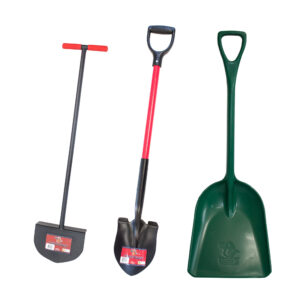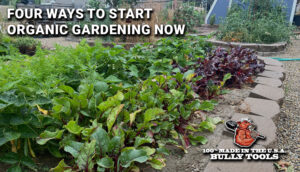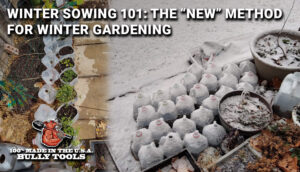The Bully Tools Spading Fork: a Multipurpose Tool
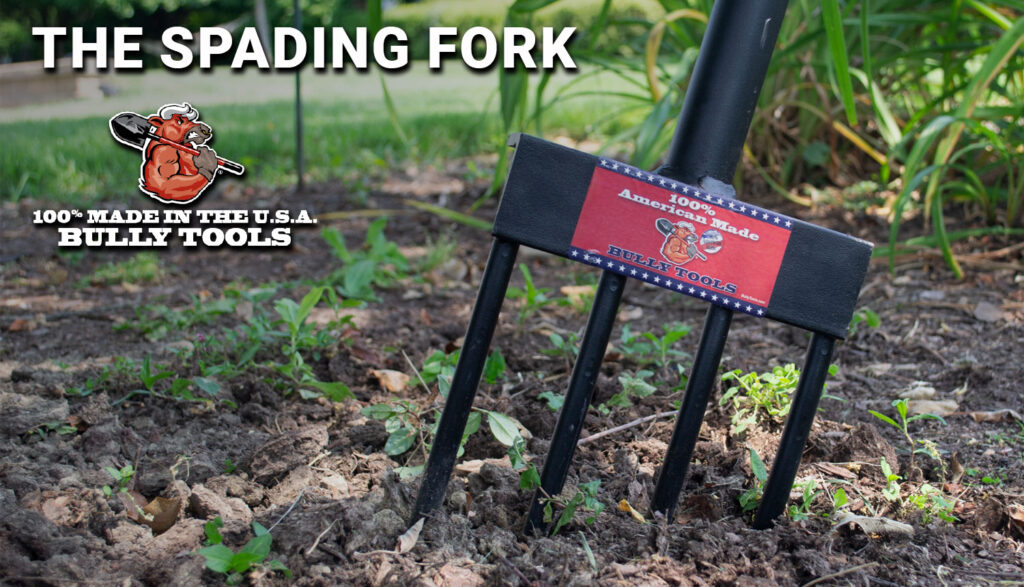
The typical set of garden tools suggested for first-time gardeners includes a shovel, rake, and hoe—but have you ever considered the usefulness of a spading fork? Certainly you could use a shovel, rake or hoe for the same job, but a spading fork makes it so much easier and productive—and in some cases, safer for your plants and soil.
Two styles of garden spading fork are available at Bully Tools:
Both work well in all the garden work described here, but of course the All Steel style is heavier to make working with materials such as clay and rock easier. The lighter fiberglass handle is also made for heavy loads and won’t bend when levering.
Here are 6 ways that a spading fork is an essential tool in your garden and yard.
Turning and Aerating Garden Soil
When you have limited choices when purchasing garden tools, sometimes a cultivator may be more than you need. Fortunately, the spading fork is useful for aerating garden soil, especially in smaller areas or raised beds. The four thick tines with pointed ends, along with the wide foot step, give you more leverage when pressing into the soil. Here we’re adding compost to the soil at the end of the garden season and want to mix it in.
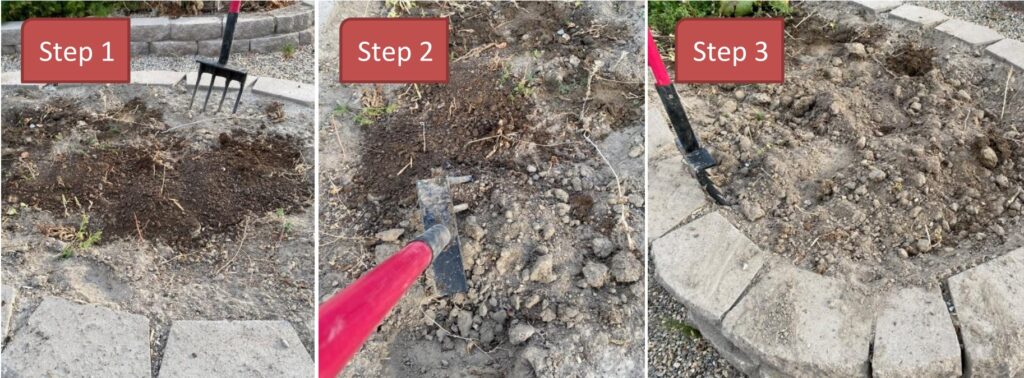
Step 1: Spread the compost over the general area.
Step 2: Mix the compost into the soil, loosening and turning it.
Step 3: Once it’s mixed it you can level it, mulch it, and it’s ready for spring planting. The compost will spend the winter breaking down the nutrients into the soil.
Harvesting Root Crops
The benefit of tines verses a shovel scoop means that tender roots and bulbs are less likely to be damaged during harvest. This includes carrots, beets, potatoes, turnips, and more The procedure for using the spading fork during harvest works best if the soil is damp, but not soggy.
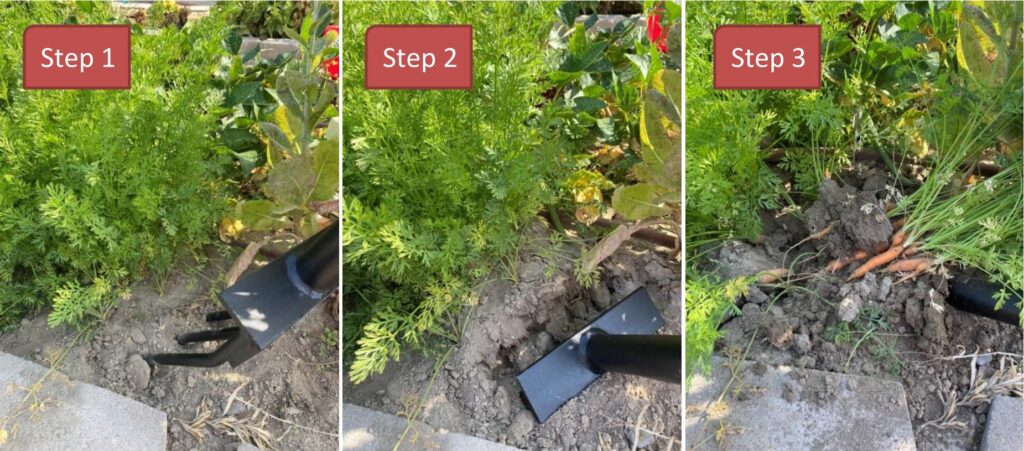
Step 1: Set the tines away from the root crop so it won’t pierce the flesh, using a shallow angle. Use the footplate to press down into the ground.
Step 2: Wiggle a little as you press down to pierce the earth. Once it’s deep enough, lever the handle and lift the crop from the soil.
Step 3: Shake the soil free from your undamaged crop.
Transplanting Established Perennials
A spading fork works well when transplanting perennials because it loosens soil and safely lifts bulbs (like daffodils and tulips), tubers (like iris and dahlias), and roots (daylilies and others).
These species tulips naturalize easily so need to be divided every few years. Here you can see the smaller bulbs ready to be re-planted elsewhere. The spading fork doesn’t puncture or cut the bulbs like a sharp shovel scoop could.

These iris tubers are safe from being cut by a shovel when using a spading fork, which is perfect for lifting the tubers to be moved or divided.

This salvia has gotten too leggy and big for this spot, so is ready to be divided. It’s easy to divide when the spading fork levers up the root system, exposing areas that can be cut, divided, and moved.

Turning the Compost Pile
Mixing a compost bin is essential for quicker decomposition. A spading fork makes the mixing process easier because it’s more useful for lifting stems and other plant matter verses a shovel or rake. Not only can you lift the composting materials, but it works just as easily for mixing and stirring smaller, more advanced piles.
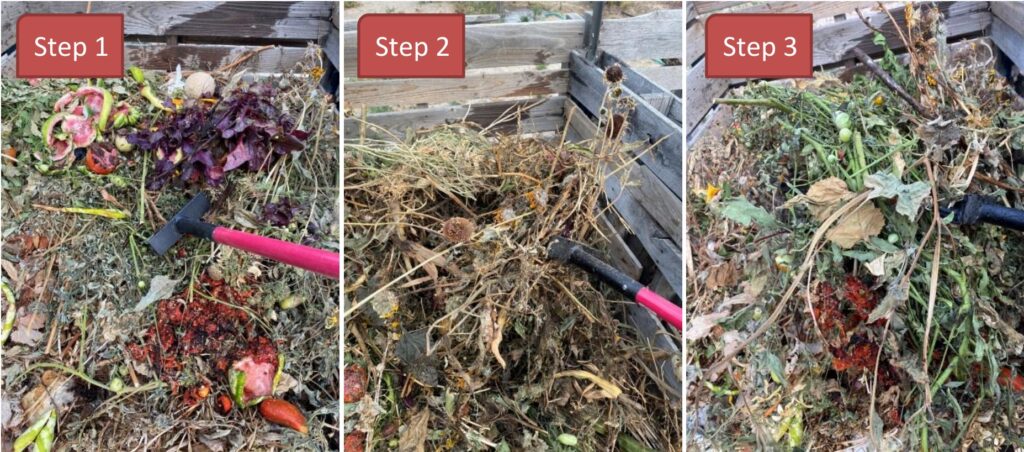
Step 1: Puncture the compost pile with the spading fork.
Step 2: Lift.
Step 3: Turn and mix the materials together. Thoroughly mix for best results.
Learn more about composting from our “Garden Composting 101: Recycling Waste into Fertilizer” blog post
Carrying Limbs
The spading fork works much the same as a pitchfork, only with thicker tines, and it’s a more multipurpose tool. The spading fork works well for lifting and moving limb piles (whether to trash or compost), and is especially useful for the prickly variety, such as roses, thistles, raspberry canes, and others.
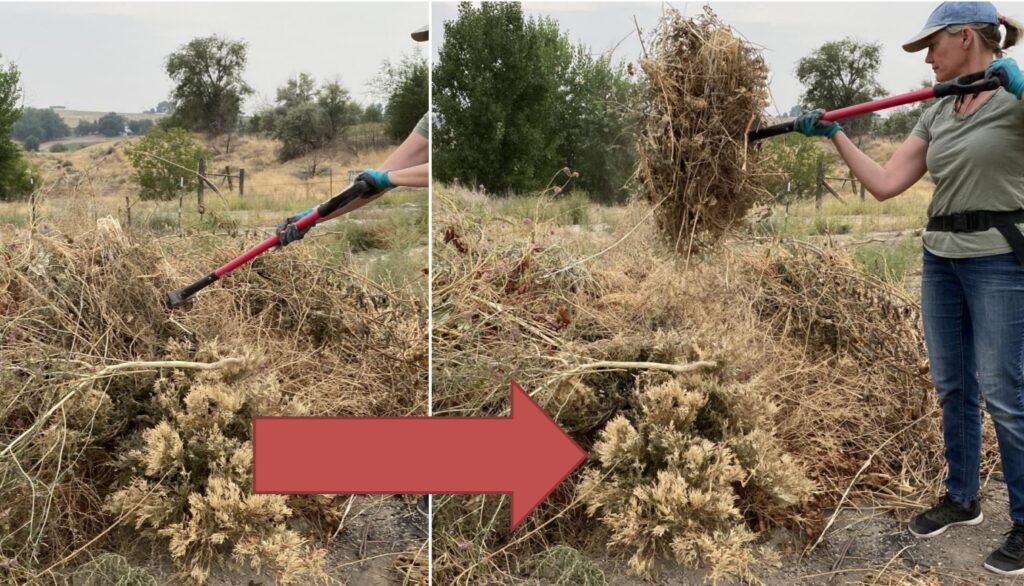
Digging Rocks, Roots, and Weeds
Because the spading fork is designed to puncture through soil and between roots, it’s perfect for lifting weeds by the root. Simply press the tines next to the root, loosen the soil, and pull the weed, root and all (this works best if the soil is slightly damp).

The spading fork is made with 12-gauge steel, making it tougher than hard soil and rocks. The angled tines, wide foot step, and handles give you the strength and leverage you need to break up tough soil and filter out rocks.

The Most Versatile Garden Tool
Gardening doesn’t always mean moving loads of soil with a shovel, sometimes all you need to do is to lift rocks, weeds, or tubers from the ground. But a spading fork works for more than that, and is useful for so many other garden projects and cleanup, saving you time and effort.


